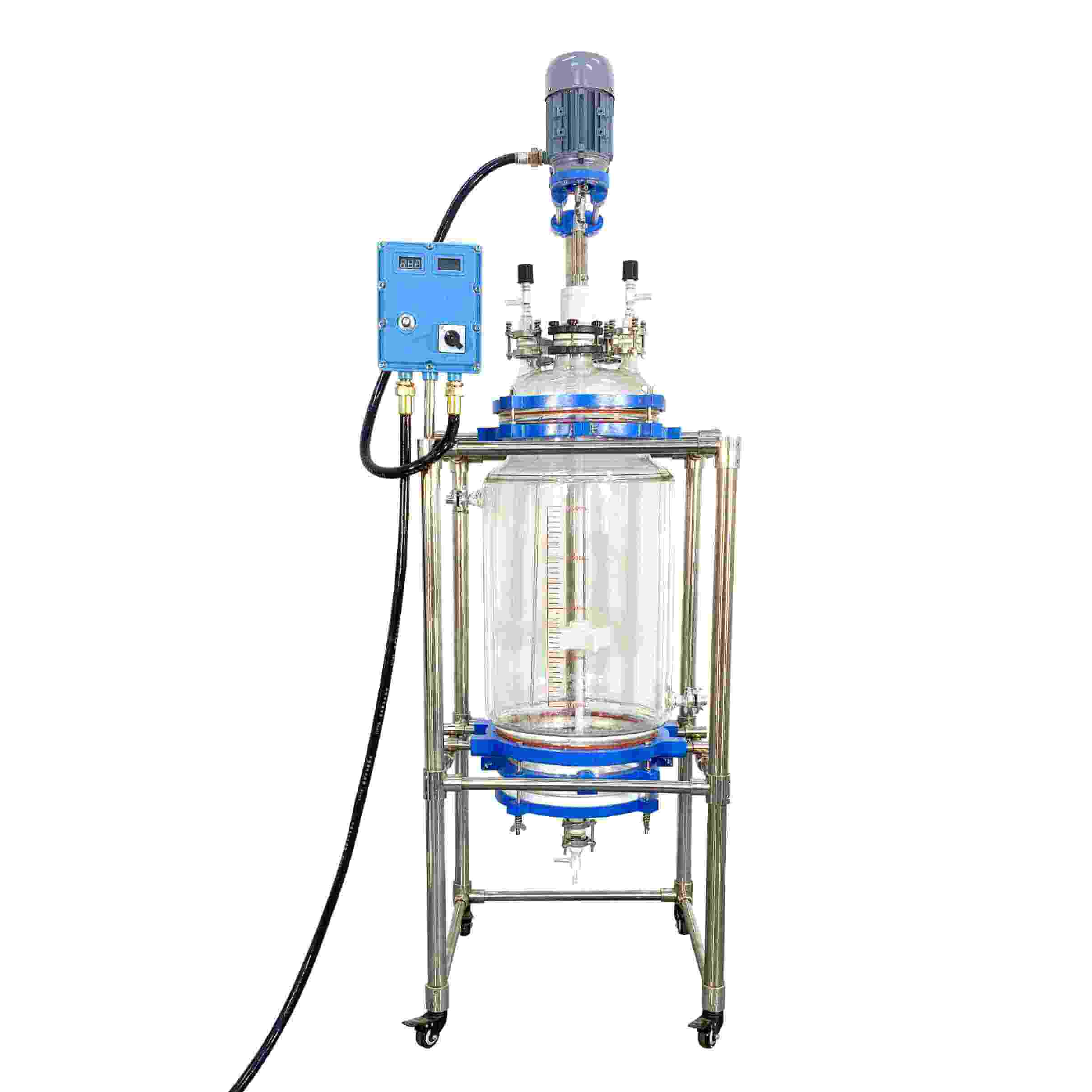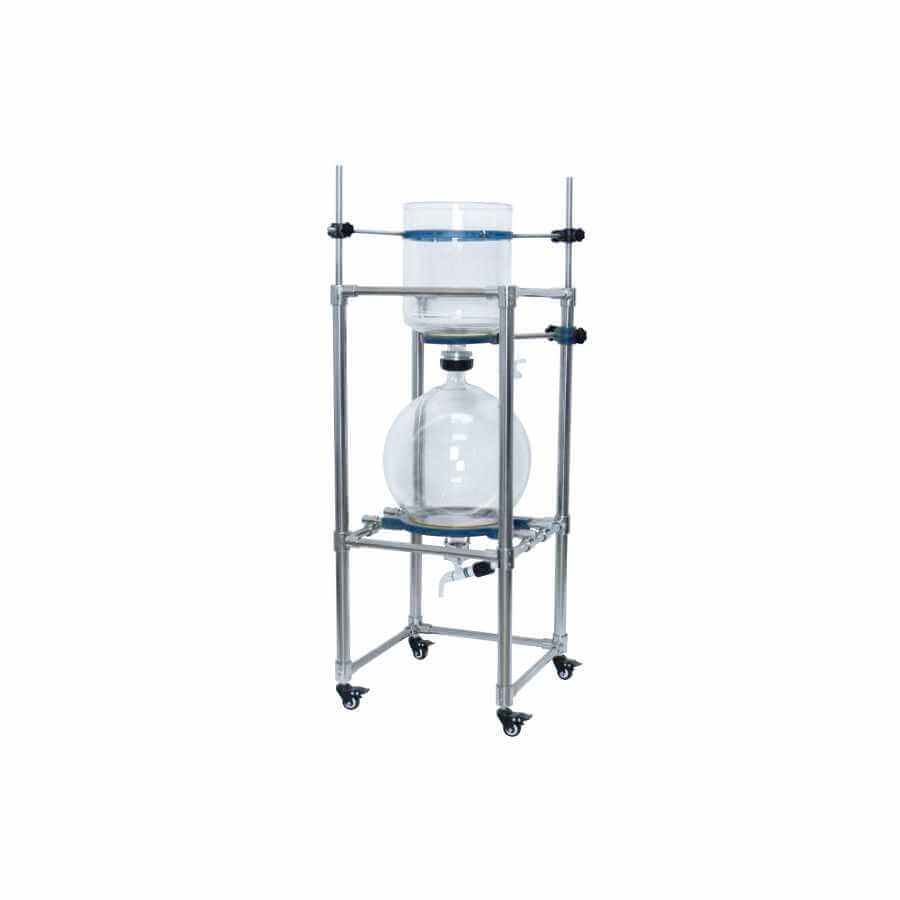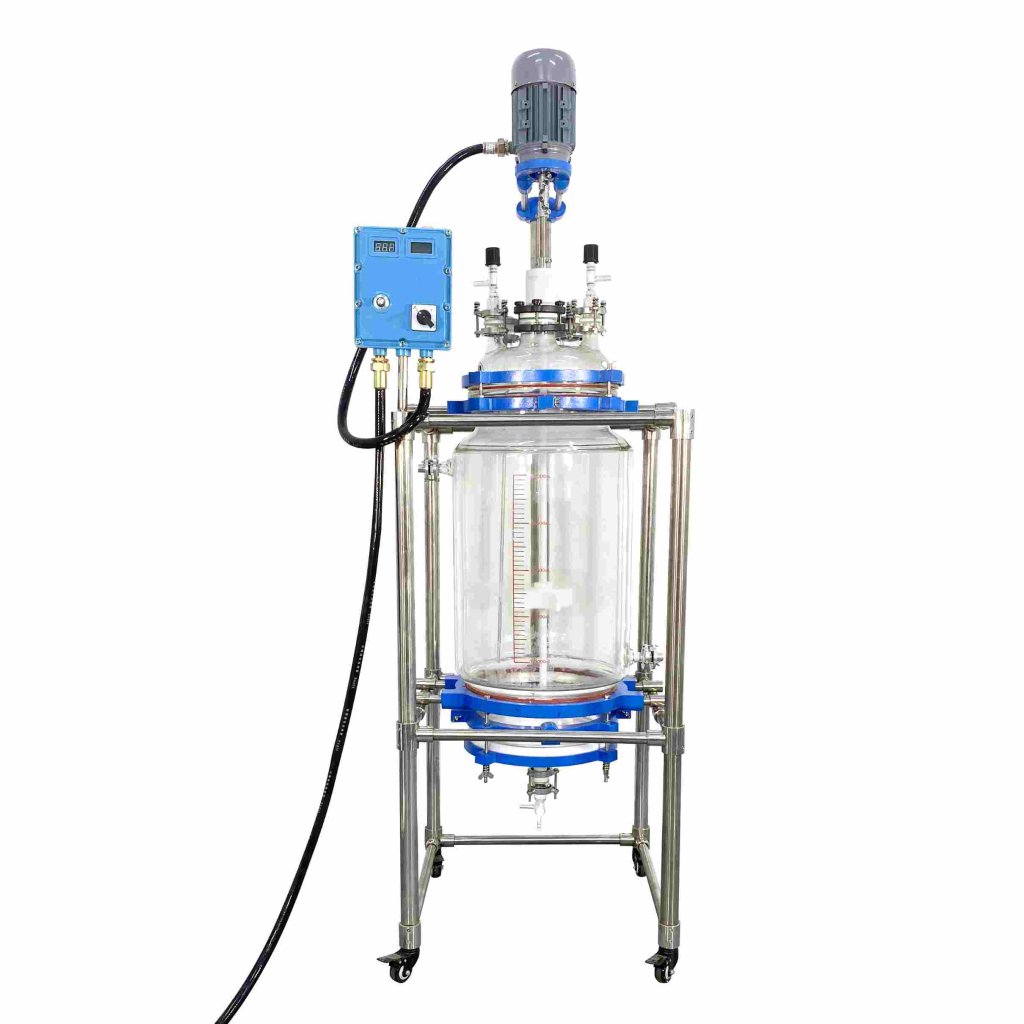

Glass Reactor
Glass reactors: used in chemical reactions, drug research and development, fine chemicals, food manufacturing, and other fields.
Material
glass
Capacity (L)
10-10000+
Mixing system
anchor, paddle, frame and others
Heating system
electric heating, oil heating and others
RUNGYU glass reactors are commonly used biochemical instruments and are widely used in modern fine chemicals, biopharmaceuticals, scientific research and experiments, and other industries. They can be used for concentration, distillation, reflux, separation, and purification reactions under the conditions of constant speed, constant force, and constant temperature. It is an ideal equipment for teaching, experiment, pilot test, and production.
Request a quoteThe temperature control system of the glass reactor is very important, as it can ensure temperature stability within the equipment and provide precise temperature control. The temperature control system of the glass reactor is based on the principle of heat conduction. The temperature inside the equipment is monitored in real time through sensors, and the power of the heating or cooling device is adjusted through the controller to maintain the set temperature. Glass reactors are often used in chemical laboratories in food, medicine, chemical, and other testing field

Features of glass reactor temperature control system
1. Fully enclosed
In a closed system, the expansion vessel does not participate in the circulation process if it contains a heat transfer medium.
2. High-temperature cooling
The compressor is used for cooling at an ultra-high temperature of 300°C, and the working time is compressed at a high temperature to control the temperature and take away excess heat.
3. Dynamic temperature control
This technology ensures that the temperature of the liquid is only ±0.1°C when it is imported or exported. If there is a large error, the control system will immediately issue a heat absorption command to quickly control the temperature.
4. Heating protection
The control system has multiple protections, but when the electrical appliances fail, this protection will fail. When the temperature exceeds the value set by the system, the protector will directly cut off the power supply. If the protector also fails, the independent control system will also issue corresponding instructions. Triple protection greatly reduces the occurrence of high-temperature overshoot.
The components and operation method of the glass reactor temperature control system
1. Temperature sensor: A thermocouple or thermistor is usually used as a temperature sensor to measure the temperature in the glass reactor.
2. Controller: The controller receives the signal from the temperature sensor and adjusts it according to the set temperature range. Common controllers include PID controllers and PLC controllers.
3. Heating device: The heating device can be an electric heating rod, an electric furnace a hot water circulator, etc. Choose the appropriate heating method according to your needs.
4. Cooling device: The cooling device can be a cooling water circulator a refrigerator, etc., used to reduce the temperature in the glass reactor.
5. Set the temperature range: According to the experimental requirements, set the temperature range of the glass reactor through the controller.
6. Start the temperature control system: Insert the temperature sensor into the glass reactor and connect the heating and cooling devices to the controller
7. Set temperature: Set the required temperature through the controller interface or buttons.
8. Monitor temperature: The controller will monitor the temperature in the glass reactor in real time and adjust it according to the set temperature range.
9. Adjust power: Based on the deviation between the real-time temperature and the set temperature, the controller will automatically adjust the power of the heating or cooling device to maintain temperature stability.
10. Regular calibration: Check the accuracy of the temperature sensor regularly and calibrate it as needed.

Control mode of glass reactor temperature control system
1. Temperature control method
There are many ways to control, such as position control, cascade control, proportional integral control, online non-contact temperature control, etc.
2. Bit control
When the temperature in the glass reactor is higher than the value set by the system equipment, the heater will be automatically turned off. When the temperature is lower than the set value, the heater turns on. The temperature is constant and within a certain range. Simple operation and convenient use.
3. Cascade control
When the position control is complicated, it is difficult to maintain the temperature in the glass reactor at the set value. To achieve this purpose, cascade control can be used to add a sensor. When the temperature does not change, the power can be adjusted in time to ensure the stability of the temperature.
4. Online non-contact temperature control
It is generally used in online monitoring or controlling the temperature of moving objects such as some rolling objects, displacement objects, and other occasions.
The temperature control system of the glass reactor is indispensable in the experiment. It can ensure the temperature stability in the glass reactor and provide precise temperature control. By understanding the principle, components, operation methods, and solutions to common problems of the temperature control system, experimenters can better grasp and utilize the temperature control system to ensure the accuracy and repeatability of the experiment.




